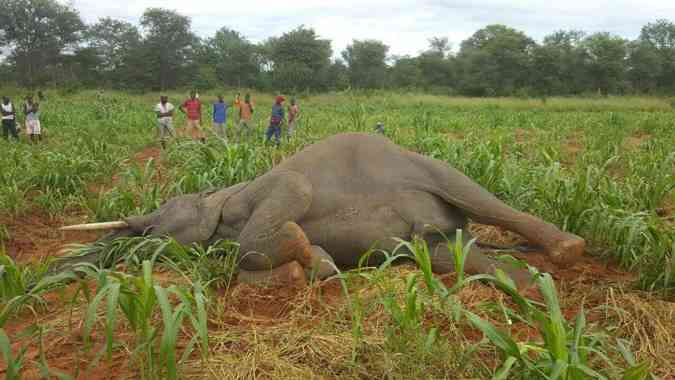
THE shortage of water in rural Bikita, Masvingo province, has seen a sharp increase in cases of human-wildlife conflicts as wild animals from the nearby animal conservancy trespass into the villages in search of the precious liquid, NewsDay has learnt.
Villagers in ward 25, Musayize, told NewsDay that they now feared for their lives as predators such as lions, cheetahs and hyenas were freely roaming the area in search of water, sometimes devouring their domestic animals.
The most troublesome animals, according to the villagers, are lions, hyenas, crocodiles, cheetahs, buffaloes, jackals, baboons, and wild dogs.
One of the villagers, Shelton Mufandawana, said the animals also break into their nutritional gardens, further exacerbating the poverty levels in the generally-dry region.
“Some of the animals get into the gardens and eat our produce, or we find our vegetables destroyed as they step on them as they look for food,” Mufandawana explained. The human-wildlife conflict in Bikita highlights the delicate balance between conservation efforts and the livelihoods of local communities.
Modius Murawo, a wildlife and verification expert in the region says he is working with community members, educating them on the importance of securing their homes and livestock to reduce human-wildlife conflicts.
“Lions cheetahs and hyenas are the wild animals that are seen roaming around here during the day, especially during the rainy season. Elephants escape from the conservancy looking for food and water from people’s homes,” Murawo said.
“So what I do are boundary patrols moving around the ward tracing wild animals that come from the conservancy to the community. “So I don’t rely on the boundaries nearer to the communities. I even go further if I notice any animal prints beyond the boundary. I notify the community to be cautious and take their cattle and livestock to other grazing lands,” Murawo said. He said they are now looking to engage relevant stakeholders to see through the process of putting collars on lions for easy tracking. He said: “Now we are advocating for a program of putting collars on lions so we can track them when they enter the community. “Even if they escape in the night we will then easily get signals and notify the community in time.”
- More action needed to stem child marriages
- Villagers fight climate change through smart agric
- Child marriage: A heavy cost for young girls in Africa
- Minister dragged to court over chieftainship
Keep Reading
Recently, the government and its development partners embarked on a project to roll out a piped water network in the area to ease water shortages, and reduce human-wildlife conflicts.
The project is funded by the government under the Ministry of Land, Agriculture, Fisheries, Water and Rural Development in partnership with UNICEF, while the UN Central Emergency Response Fund (CERF) is providing the funding.
Zimbabwe recorded close to 1 500 human-wildlife conflict cases, resulting in 16 human fatalities between 2019 and 2023.
The Zimbabwe Parks and Wildlife Management Authority attributed most of the clashes to loss of habitat caused by the wild animal population explosion, particularly elephants.











